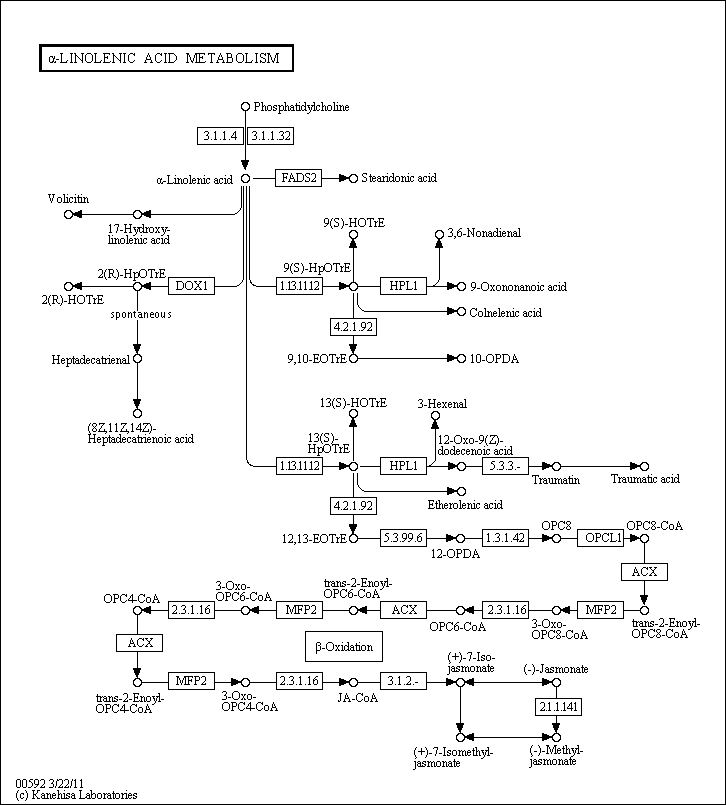alpha-Linolenic Acid Metabolism
Description: Alpha-linolenic acid is an essential polyunsaturated fatty acid that is used in the synythesis of eicosapentaenoic acid and docosahexaenoic acid. The compound was first isolated in 1942 and then artificially synthesized in 1995. The most abundant sources of alpha-linolenic acid can be found in soybeans, flax seed, and walnuts. They have some of the highest (by weight) amount of alpha-linolenic acid out of any foods.
It cannot be produced by the body naturally, so it needs to be ingested in a diet. This is because the enzymes 12- and 15-denaturase, which convert stearic acid into alpha-linolenic acid, are not available in the body. Once ingested in a diet, phospholipids can be cleaved and along with phospholipase A2, alpha-linolenic acid can be reproduced in the body. Alpha-linolenic acid intially begins outside of the cell and moves into the intracellular space, where in the endoplasmic reticulum, it is converted to stearidonic acid using fatty acid desaturase 2.

Related BMRB Molecules
For complete information about pathway, see KEGG [map00592]
